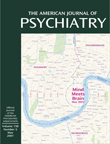Most varieties of illness range from mild to severe, from transient to long-lasting. But lack of blood test numbers and biopsy staging makes the classification of “severe and persistent illness” especially difficult in psychiatry. The reasons for needing to classify are economic. Following World War II, many Western nations experienced an economic growth and adopted a social philosophy that fostered the development of universal health and social services. Adult Severe Mental Illness is written in the context of the British National Health Service, but the questions it raises apply to psychiatry in general. Since the 1950s, economic growth has fluctuated, demands for health services have grown, a demographic shift toward an increasingly elderly population has placed unexpected strain on service use, and new technologies have not come cheap. As elsewhere, the British government has long realized that indefinite growth of universal health services is not sustainable, and numerous reforms have been instituted.
Reform requires giving priority for services to those most in need. This book aims to set a rational dividing line between those mental health problems which should stay within the realm of primary care and those which should be referred to specialists and to mental health services. In the United States, the purposes of defining a border between severe and nonsevere are different, but the issues are similar. The overall intent is to rationalize expensive and finite services.
Many communities have grappled with this problem, and agreement has been reached about the guiding principles of mental health reform. The introductory chapter of this book refers to the “five Ds” of most definitions of severity: diagnosis (e.g., psychosis or dementia), disability (inability to care for oneself independently, to work, or to sustain relationships), duration (the condition is enduring or leads to frequent recurrences and interventions), danger (the condition poses significant risk to the safety of self or others), and distress (this includes personal distress as well as the burden on careers and the impact on dependents). Sensibly, the authors of this chapter conclude that definitions incorporating these dimensions need to be made locally because they depend on a variety of local factors and contexts.
The subsequent chapters cover a number of psychiatric diagnoses. The chapter on personality disorders is particularly germane because it is precisely this group of diagnoses that poses the most problems for attempts at weeding out “nonsevere” psychiatric conditions. There are also excellent chapters on the differentiation between need and demand and on the development of models of comprehensive care. There is a chapter on psychological approaches to psychotic illness, and it is this chapter, perhaps more than any other, that makes the reader pause. The psychological interventions discussed here are time-intensive. They will not alter the diagnosis of illness or its duration, nor can they be expected to diminish dangerousness. But they promise to decrease disability and distress. Should such interventions form part of a comprehensive care model? That will depend on the criteria by which their effectiveness is measured.
In addition to the five Ds, the big C, cost, and the big E, effectiveness, loom large behind any definition of severe mental illness. What we are prepared to pay as a society in order to relieve mental suffering always defines what gets included under the rubric of severity.

